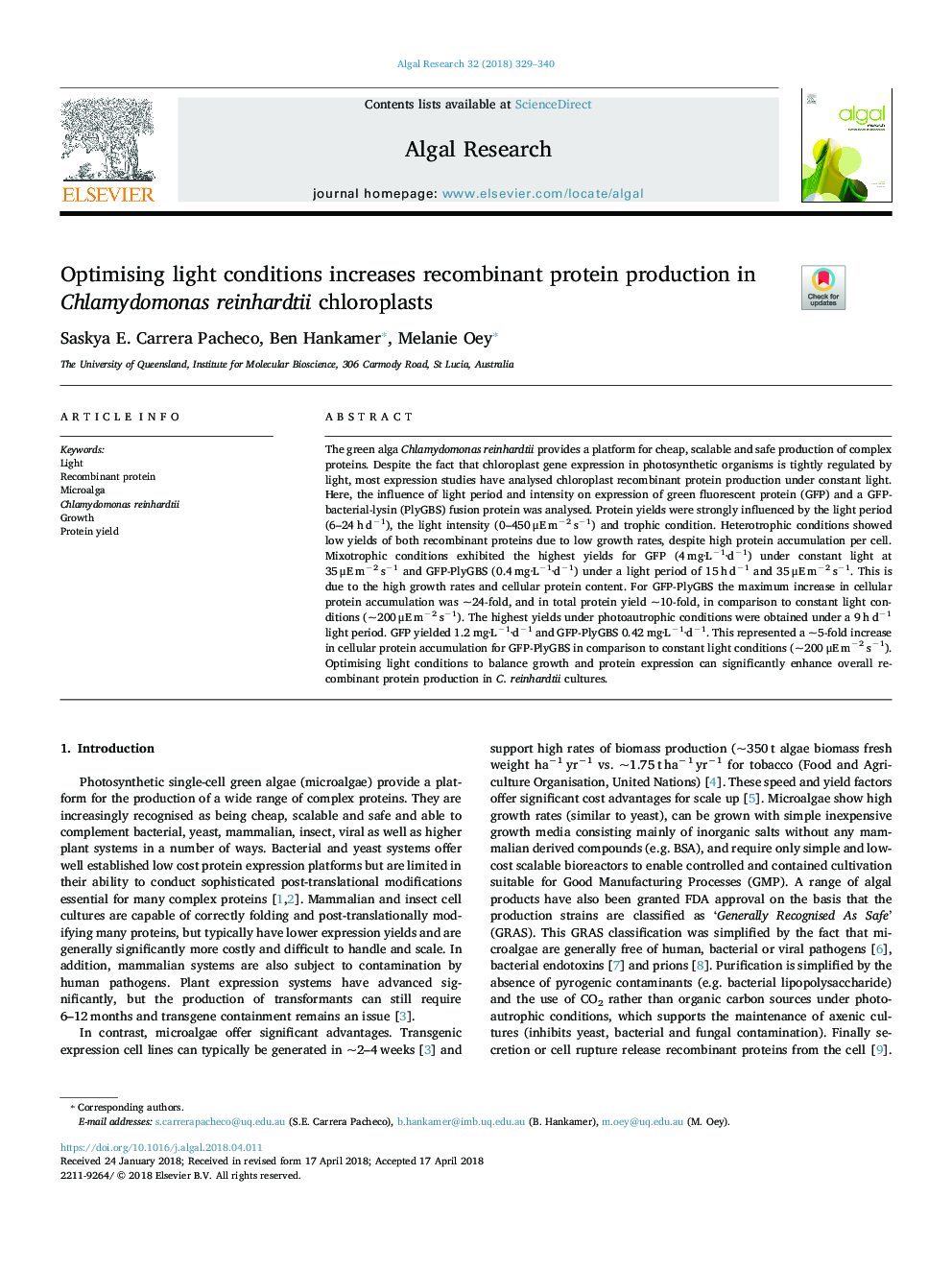| Article ID | Journal | Published Year | Pages | File Type |
|---|---|---|---|---|
| 8085764 | Algal Research | 2018 | 12 Pages |
Abstract
The green alga Chlamydomonas reinhardtii provides a platform for cheap, scalable and safe production of complex proteins. Despite the fact that chloroplast gene expression in photosynthetic organisms is tightly regulated by light, most expression studies have analysed chloroplast recombinant protein production under constant light. Here, the influence of light period and intensity on expression of green fluorescent protein (GFP) and a GFP-bacterial-lysin (PlyGBS) fusion protein was analysed. Protein yields were strongly influenced by the light period (6-24â¯hâ¯dâ1), the light intensity (0-450â¯Î¼Eâ¯mâ2â¯sâ1) and trophic condition. Heterotrophic conditions showed low yields of both recombinant proteins due to low growth rates, despite high protein accumulation per cell. Mixotrophic conditions exhibited the highest yields for GFP (4â¯mg·Lâ1·dâ1) under constant light at 35â¯Î¼Eâ¯mâ2â¯sâ1 and GFP-PlyGBS (0.4â¯mg·Lâ1·dâ1) under a light period of 15â¯hâ¯dâ1 and 35â¯Î¼Eâ¯mâ2â¯sâ1. This is due to the high growth rates and cellular protein content. For GFP-PlyGBS the maximum increase in cellular protein accumulation was ~24-fold, and in total protein yield ~10-fold, in comparison to constant light conditions (~200â¯Î¼Eâ¯mâ2â¯sâ1). The highest yields under photoautrophic conditions were obtained under a 9â¯hâ¯dâ1 light period. GFP yielded 1.2â¯mg·Lâ1·dâ1 and GFP-PlyGBS 0.42â¯mg·Lâ1·dâ1. This represented a ~5-fold increase in cellular protein accumulation for GFP-PlyGBS in comparison to constant light conditions (~200â¯Î¼Eâ¯mâ2â¯sâ1). Optimising light conditions to balance growth and protein expression can significantly enhance overall recombinant protein production in C. reinhardtii cultures.
Related Topics
Physical Sciences and Engineering
Energy
Renewable Energy, Sustainability and the Environment
Authors
Saskya E. Carrera Pacheco, Ben Hankamer, Melanie Oey,
